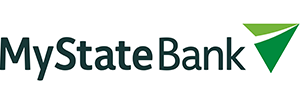What is an investment home loan?
An investment home loan is a loan that’s used for purchasing an investment property to generate income and capital gains. This essentially means getting tenants in, collecting rent, and the property increasing in value over time. This is different to an owner occupier home loan in that those are for homes to be lived-in by the person taking out the mortgage.
Investment home loan interest rates
Interest rates are typically higher for investment home loans than owner occupier home loans. This is because the lender might classify an investor as a riskier borrower than an owner occupier. Chances are if you’re an investor you already have an existing home loan and are leveraging yourself further.
RBA data from July 2019 up until the time of writing shows investment home loans are on average 34 basis points or 0.34% higher than owner occupier loans. This is for new, variable-rate, principal & interest (P&I) loans funded in the month.
Interest repayment type
Like with all home loans, borrowers typically have the choice between choosing principal & interest (P&I) and interest-only repayments.
Interest-only loans are typically much more popular with investors than owner occupiers, and this is for a few reasons:
1. Interest is tax deductible:
Unlike principal loan repayments, interest payments on an investment property are tax deductible.
2. Shorter hold time:
If your investment timeline and your interest-only period tend to match, you could pay minimal amounts in repayments, sell the home for a profit, and then pay back the principal that way. This is contingent on having strong capital gains over that period, which aren’t guaranteed.
3. Start-up costs can be expensive:
Unlike first home buyers and other owner occupiers, there usually aren’t as many concessions with things like stamp duty or land tax, which can add up to thousands. Property managers typically take up to around 10% of the weekly rent as a fee, and there are many other costs to start the investment journey. An interest-only loan could alleviate some of those cost pressures in the short term.
Investment home loan fees
Like with other home loans, some lenders can charge a myriad of fees. These include establishment fees, annual or monthly ongoing fees, discharge fees, valuation fees and other costs. This can add up to hundreds or even thousands of dollars over the life of the loan. This is typically reflected in the comparison rate – a high comparison rate tends to indicate there’s a few fees to pay.
Offset or Redraw for an investment home loan?
One of the key features when choosing any home loan is if the product has an offset or redraw account. While at their base level they do a similar thing – lower interest payable – the way they get there is different.
For example, an offset account is in a separate bank account and is your money – you usually get a debit card to spend and save how you like. The money in that account is then offset against the loan balance. If you have a $500,000 loan and a $50,000 offset balance, you’re only paying interest on $450,000.
Not all offset features are 100% offset though, so do your research; some might only offer 80% offset for example. The negative with having an offset account is usually an extra cost – often a certain fee per month, or a higher interest rate.
A redraw on the other hand is usually free to use. They can also lower interest payable on your home loan, however the extra money you pile into it isn’t harboured away from your home loan. There have been instances with some banks in the past where the redraw is automatically sucked into the loan if the bank has detected (either correctly or incorrectly) the customer is at risk of falling behind on repayments.
In a similar fashion, if you have $50,000 remaining on your loan balance, and $50,000 in the redraw it’s not unrealistic for that to trigger an automatic payment, when you could have used that money for a rainy day.
What tax benefits do investment home loans come with?
Being a property investor in Australia comes with a few perks generally not available to other types of property purchases or investments.
Tax deductions
As a property investor you can deduct expenses associated with the investment property off your income and hence lower tax payable every financial year. Typical deductions include:
- Interest payable on the home loan
- Home, contents and landlord insurance
- Maintenance and management costs
- Council rates
- Property value depreciation (construction costs called ‘capital works’, and assets within the home such as appliances, called ‘plant and equipment’)
- Travel expenses to the property if inspecting or maintaining it
Before proceeding further with potential deductions on your investment property, it’s advisable you speak to a registered tax agent concerning your individual financial circumstances
Negative gearing
Negative gearing essentially means your property expenses outweigh the rent you collect. For example, if your expenses cost $500 per week yet your rent charged is $400 per week, you can claim that $100 shortfall as a deduction against your regular income. This means that your investment is negatively geared at $100 per week (or $5,200 per year). If you earned $70,000 in employment income per year, that scenario would lower your taxable income to $64,800.
It is the opposite of positive gearing, which means the rent collected outweighs the expenses on the property. The theory with negative gearing is that capital gains more than make up for the ‘income lost’ throughout your period of ownership.
The risk with negative gearing is you might not have enough cash or disposable income to pay for expenses as they occur. The tax benefit won’t take effect until you submit your return after the end of financial year. This could be a problem for retirees who don’t have as regular an income. Deciding on which way to gear is up to you and your financial circumstances.
The six-year capital gains tax rule
Also called the absence rule, the six year CGT rule means you can treat your primary place of residence (PPOR) as an investment property for up to six years without paying capital gains tax (CGT) for that period. Rent earned on the property over that period will still be taxed as income though. This rule could be ideal for, for example, those on a temporary work placement who are living away and either renting elsewhere or have housing provided for them.
The catch? You can’t live in it, and you can’t treat any other property as your PPOR. This means you’ll need to either rent, live with someone else, or have housing provided for you.
While not strictly an investment home loan perk – the property after all remains a PPOR – this is often a topic of conversation among would-be investors. More information can be found on the Australian Tax Office website.






















